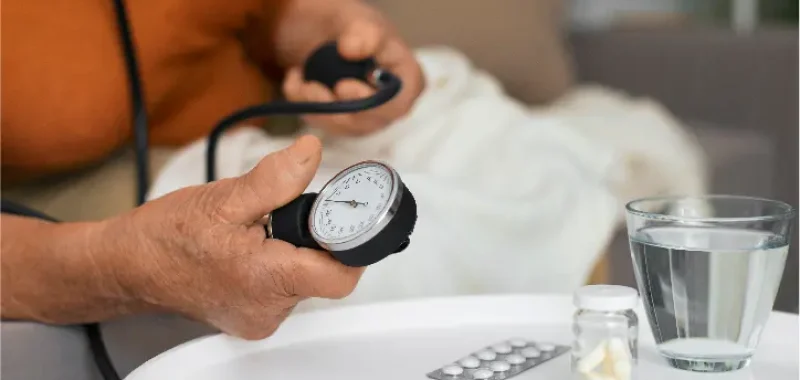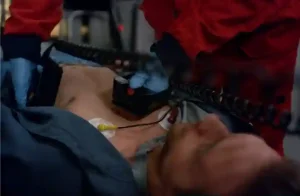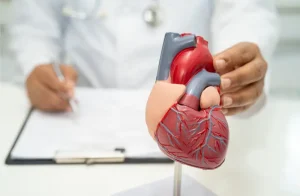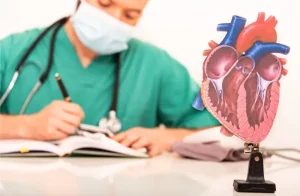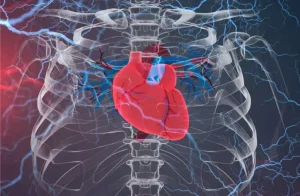High blood pressure often lurks without symptoms, which is why some call it the “silent killer.” But inside your body, it’s working relentlessly, damaging blood vessels and making you dangerously vulnerable. One of the most devastating consequences of uncontrolled high blood pressure is stroke, a medical emergency that can change lives in an instant.
You might think of stroke as something that happens to older adults, but the reality can be much broader. Understanding stroke-level blood pressure is crucial. It’s about knowing the numbers that signal trouble—the blood pressure readings that dramatically increase your risk of this life-altering event.
This blog post isn’t about fear; it’s about empowerment. We’ll explain what stroke-level blood pressure means, how it’s determined, and the steps you can take to protect your health. Because knowledge, combined with action, is your best defense.
What Is the Link Between Stroke and High Blood Pressure?
High blood pressure and stroke are closely connected. High blood pressure puts excess strain on your arteries, the blood vessels that carry oxygen-rich blood throughout your body. This constant pressure can weaken and damage artery walls over time.
Weakened arteries are more likely to become blocked by blood clots. Additionally, they have an increased risk of rupturing. When a clot blocks blood flow to the brain, or an artery in the brain bursts, it results in a stroke.
What Blood Pressure is Stroke Level?
Blood pressure readings above 180/120 mmHg are considered to be in the “hypertensive crisis” range. This means that the blood pressure is dangerously high and increases the risk of a stroke significantly. Urgent medical attention is required at these levels.
Blood Pressure Categories and Stroke Risk
| Blood Pressure Category | Systolic (Top Number) | Diastolic (Bottom Number) | Stroke Risk |
| Normal | Less than 120 | and less than 80 | Low |
| Elevated | 120-129 | and less than 80 | Increased |
| High Blood Pressure (Hypertension) Stage 1 | 130-139 | or 80-89 | High |
| High Blood Pressure (Hypertension) Stage 2 | 140 or higher | or 90 or higher | Very High |
| Hypertensive Crisis | Higher than 180 | and/or higher than 120 | Immediate Risk |
Even blood pressure readings lower than 180/120 mmHg can still be harmful and increase stroke risk over time.
Types of Strokes That Occur Due To High Blood Pressure
Uncontrolled high blood pressure puts a tremendous strain on your blood vessels, particularly those within the brain. This constant stress increases the risk of dangerous blockages, vessel ruptures, and, ultimately, stroke. Here are the main types of stroke that can be directly linked to high blood pressure
1. Ischemic Stroke
- The most common type of stroke: Caused by a blockage (usually a blood clot) that cuts off blood flow to a part of the brain.
- High blood pressure’s role: It can lead to the narrowing of arteries and the formation of blood clots. Additionally, uncontrolled blood pressure can contribute to atrial fibrillation (irregular heartbeat), which increases the risk of clots that travel to the brain.
2. Hemorrhagic Stroke
- Less common, but often more severe: Occurs when a weakened blood vessel in the brain bursts, causing bleeding into the brain tissue.
- High blood pressure’s role: Prolonged high blood pressure weakens and stresses blood vessel walls, increasing the risk of these dangerous ruptures. There are two main subtypes:
- Intracerebral hemorrhage: Bleeding directly within the brain tissue itself
- Subarachnoid Hemorrhage: Bleeding in the space between the brain and the membranes surrounding it.
3. Transient Ischemic Attack (TIA)
- Often called a “mini-stroke”: This occurs due to a temporary blockage of blood flow to the brain and shares the same risk factors as stroke. While TIAs don’t cause permanent damage, they are a major warning sign that a full-blown stroke is likely if preventative measures aren’t taken.
Signs & Symptoms Of A Stroke
Strokes are medical emergencies and every second counts when it comes to getting help. Recognizing the signs and symptoms of a stroke can lead to faster treatment and a better chance of recovery.
Remember the acronym FAST:
- Face drooping: Is one side of the face drooping or numb? Ask the person to smile and see if it’s uneven.
- Arm weakness: Can the person raise both arms and keep them level? Does one arm drift downwards?
- Speech difficulties: Is speech slurred, garbled, or difficult to understand? Can the person repeat a simple sentence?
- Time to call emergency services: Even if symptoms seem to go away, get medical help immediately. Don’t wait!
Other Possible Stroke Symptoms
- Sudden numbness or weakness, especially on one side of the body
- Sudden confusion or trouble understanding others
- Sudden trouble seeing in one or both eyes
- Sudden difficulty walking, dizziness, or loss of balance
- Sudden, severe headache with no known cause
What is Stroke Level Blood Pressure For A Woman
While women have certain unique stroke risk factors, the blood pressure readings that signal a significant increase in stroke danger are the same for both men and women. Stroke is the fifth leading cause of death for women in the US. Shockingly, 1 in 5 women between ages 55 and 75 will experience a stroke. k. A 10-mm Hg increase in systolic BP is associated with a 38% increased stroke risk in women. More than 2 in 5 women have high blood pressure (greater than or equal to 130/80 mm Hg) or use medication to manage it.⁵ Sadly, only about 1 in 4 of those women have their blood pressure adequately controlled.
Steps You Should Take To Manage High Blood Pressure For Preventing Stroke
Controlling high blood pressure is one of the most powerful things you can do to protect yourself from a stroke. Here are crucial steps you can take:
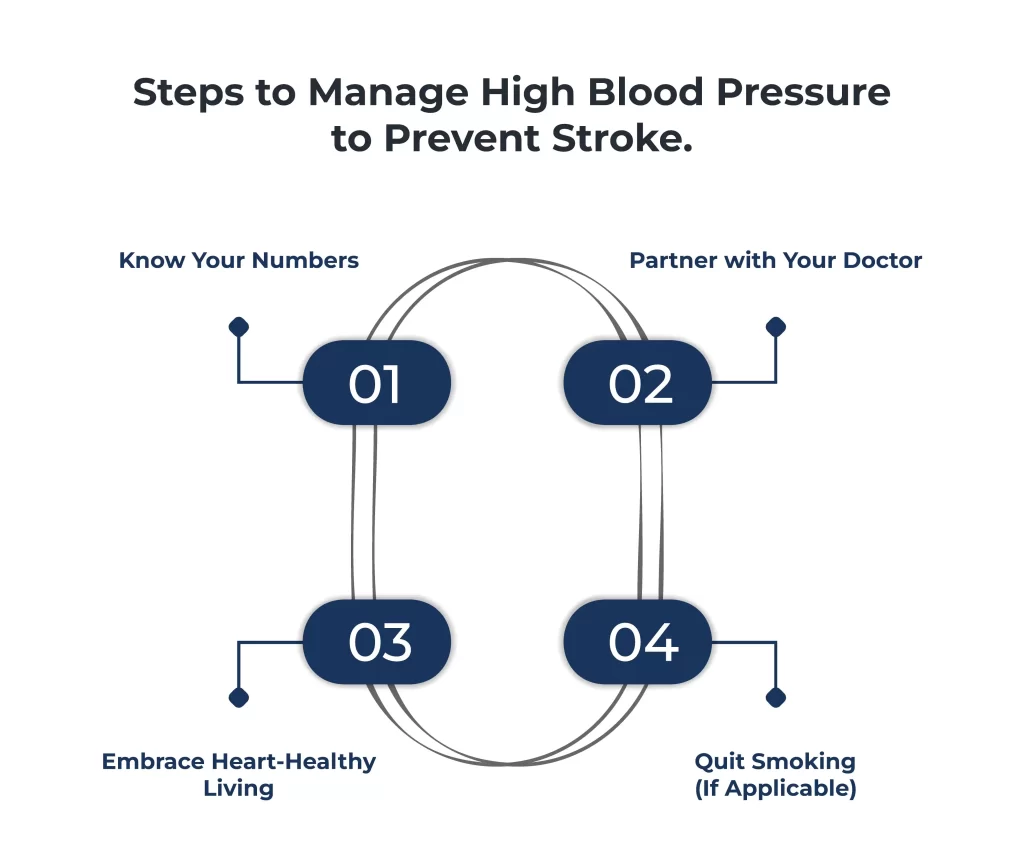
1. Know Your Numbers:
- Get your blood pressure checked regularly by a healthcare professional.
- If you have high blood pressure, consider purchasing a home blood pressure monitor for frequent readings.
2. Partner with Your Doctor:
- Discuss your individual risk factors for stroke and your target blood pressure goals.
- If recommended, start medication to manage high blood pressure. Follow prescription instructions carefully.
- Never stop or adjust medications without consulting your doctor.
3. Embrace Heart-Healthy Living:
- Diet: Choose a diet rich in fruits, vegetables, whole grains, and lean protein. Limit salt, processed foods, and saturated fats.
- Exercise: Aim for at least 150 minutes of moderate-intensity exercise each week (e.g., brisk walking)
- Weight Management: Maintain a healthy weight. Even small amounts of weight loss can significantly impact blood pressure.
- Limit Alcohol: Excessive alcohol consumption can raise blood pressure.
- Manage Stress: Practice relaxation techniques like deep breathing or meditation to reduce stress.
4. Quit Smoking (If Applicable):
- Smoking damages blood vessels and dramatically increases stroke risk. Quitting offers immense health benefits.
Additional Tips
- Get enough sleep: Aim for 7-8 hours of quality sleep each night.
- Seek Support: Join support groups or connect with others working towards blood pressure control.
Bottom Line
High blood pressure is a silent threat to your health. Understanding stroke-level blood pressure is the first step in protecting yourself. Get your blood pressure checked, partner with your doctor, and adopt a heart-healthy lifestyle. Know your numbers, understand the risks, and take proactive steps to protect your heart and brain. You have the power to lower your stroke risk.

